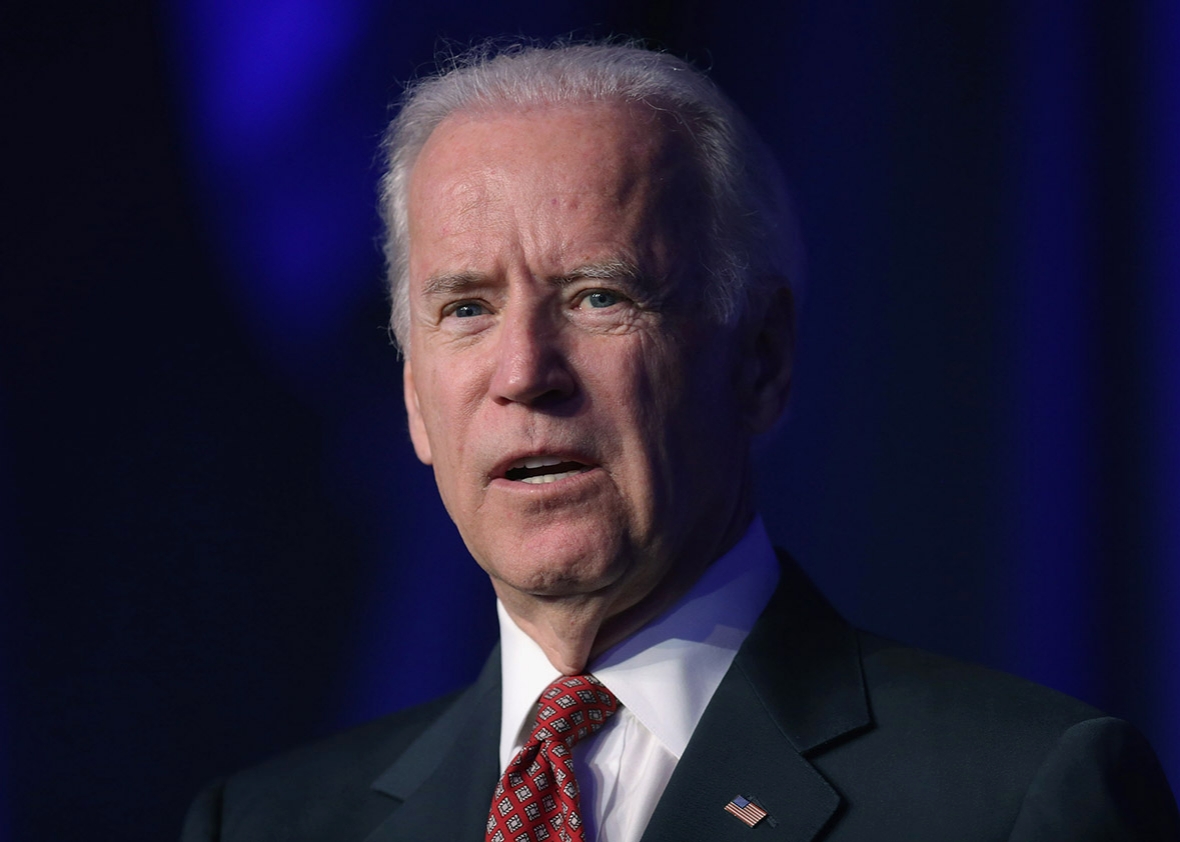
What Is Taking Joe Biden So Long?
By Jamelle Bouie
Is he this unsure, or does he actually have a plan?
Joe Biden is still thinking. The vice president’s self-imposed summer deadline for deciding whether to enter the Democratic primary will lapse this week. In an interview with the Catholic America magazine, Biden described his continued ambivalence: “It’s just not there yet and it may not get there in time to make it feasible to be able to run and succeed, because there are certain windows that will close. But if that’s it, that’s it. It’s not like I can rush it.”
At the same time, prominent Democrats think he’s essentially in the race. “Top Democrats increasingly believe Vice President Joe Biden is going to enter the presidential race, setting up a battle with Hillary Clinton for the Democratic nomination,” reports the Hill. The Biden camp, for its part, is cagey on its plans for an announcement. “Various deadlines have been floated,” reportsPolitico. “End of summer, Oct. 1, the first Democratic debate on Oct. 13, the Iowa Jefferson-Jackson dinner on Oct. 24. But none of these is looking like a hard deadline. Neither are any of the cutoff dates for getting his name on state ballots.”
This all raises a question: What, exactly, is Biden doing?
Right now, Hillary Clinton is completely dominant. Even with her email scandal and unprecedented decline in favorability and popularity, she leads the national Democratic field—including Biden—by double digits. Clinton has 44 percent support in the Democratic primary, to 26 percent for Bernie Sanders and just over 20 percent for the vice president. She trails Sanders in New Hampshire but holds solid leads in Iowa and South Carolina.
Right now, Hillary Clinton is completely dominant. Even with her email scandal and unprecedented decline in favorability and popularity, she leads the national Democratic field—including Biden—by double digits. Clinton has 44 percent support in the Democratic primary, to 26 percent for Bernie Sanders and just over 20 percent for the vice president. She trails Sanders in New Hampshire but holds solid leads in Iowa and South Carolina.
Most importantly, she’s winning endorsements from party elites and interest groups. Last week, she won endorsements from New Hampshire Gov. Maggie Hassan, Sen. Jeanne Shaheen, and the state’s chapter of the National Education Association. She also has two surrogates from Sanders’ home state of Vermont: Gov. Peter Shumlin and former Gov. Howard Dean. And on Tuesday, she got a big endorsement from the United Brotherhood of Carpenters and Joiners of America, a major union with more than half a million members. Overall, she has an unprecedented lead in the “endorsement primary,” with support from dozens of senators, governors, and members of Congress. Voters are debating the Clinton campaign, but the party infrastructure has largely decided.
Now, none of this means Clinton is destined to win the Democratic primary. As with everyone who runs for president, there’s always a nonzero chance for catastrophic collapse, from an indictment over her private email server to some unforeseen and fatal blow to her campaign. But if the evidence means anything, then the most likely outcome—by far—is an eventual Clinton win.
The truth, in fact, is this was the case from the beginning—after President Obama won re-election in 2012—and it has shaped the race in important ways. If Clinton were a typical candidate, she would have more opponents than a liberal insurgent: She would face other establishment candidates with similar credentials and bona fides. But Clinton isn’t typical; she’s a former first lady, a former senator, a runner-up to Barack Obama with 18 million votes to her name, and a former secretary of state. She’s the Galactus of the Democratic Party, and as soon as she chose to run again, she cleared the field of potential competitors and rival political machines.
This is great for Clinton, but a mixed-bag for the Democratic Party. Not only does it lose the benefit of a hypercompetitive primary, which builds energy and infrastructure, but if Clinton falls—if she has to leave the race—then there’s no alternative, no John Edwards to John Kerry, or even a Hillary Clinton to Barack Obama. Moderate and conservative Democrats will likely reject Sanders, to say nothing of donors and establishment figures. Which brings us back to Biden.
What is the vice president doing? He’s running as the backup. “[Biden] is running for Clinton’s understudy—as the candidate who will go on at the last minute, if necessary, if she’s unable to continue for any reason,” explains political scientist and Bloomberg columnist Jonathan Bernstein. He grants that it isn’t clear that this is what Biden is thinking, but he thinks it is what’s happening.
The Democratic Party, or at least its establishment, needs a B Team—a candidate and a campaign to run if Clinton can’t. Sanders doesn’t fit the bill, and Martin O’Malley—who sits near the bottom of the polls, with 1 percent—isn’t visible enough to meet the challenge. Biden, the sitting vice president, is the natural choice. And so he does the work: He talks with lawmakers, sits with officials, meets with donors, and builds the skeleton of a campaign, with enough muscle to move if necessary. In the meantime, he’ll enjoy the attention of media and supporters. After all, it’s nice.
No comments:
Post a Comment